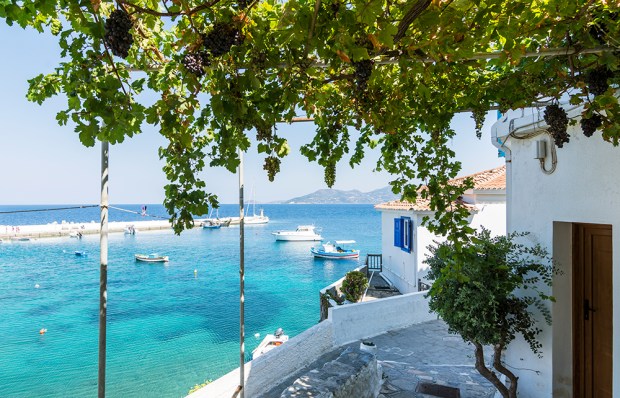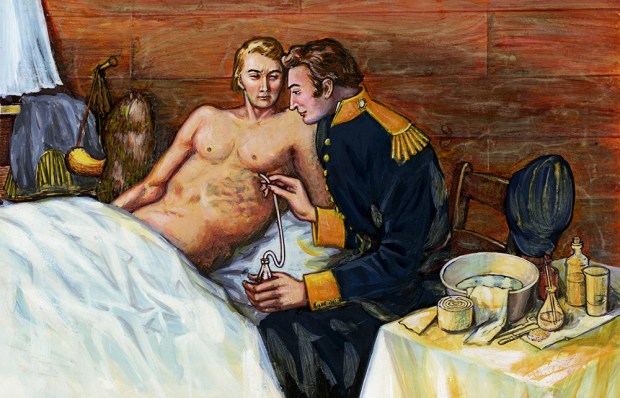This is the kind of novel that will be discussed jubilantly in the book clubs of places like Lib Dem north Oxford. It is a social polemic disguised as fiction. Maggie Gee’s concerns are topical: migration, global warming, ‘the virus’, colour prejudice and first nations. The Red Children will be selective in its appeal.
The plot is a surreal fantasy set on ‘the edge of England’, in Ramsgate, where Gee lives. Strange red people with large heads turn up suddenly and stand about naked on the seafront looking out to the Channel or in to Pegwell Bay. The locals, apart from an unstable minority, members of the PBF – the Put Britain First movement – decide to welcome and accommodate them. It transpires that these newcomers are residual Neanderthals who have been living in caves in Gibraltar and are now escaping the rising temperatures of Africa and the Mediterranean. Their leader is a phoney professor, supposedly holding several Cambridge degrees, Juan Der Tal – the clue is in the name.
Simultaneously, a couple of crazy ravens (remember that the settlement was originally Hraefnesgeat – Ravensgate) chatter about events. They are not quite a classical chorus, but almost. The town’s cliff caves, housing strange creatures, recall Robert Graves’s sea-caves of Criccieth in ‘Welsh Incident’.
Events culminate in a midsummer party, a festival of thanksgiving that the professor, his mistress and the local mixed-race acting headmaster of the primary school organise. A storm presages catastrophe, so the red people are summoned back to Gibraltar. Their return involves the theft of a tourist attraction replica Viking warship, ‘dragon-headed’, in which to make the voyage. Vikings, we are reminded, were early migrants to Britain’s shores.
At every turn the allegory is reinforced, sermons are preached. The red people should not be judged by their colour; Thanet towns feel ‘neglected by London’; old, quiet white people pass on their ‘stubborn reserve’ to their progeny. The critical ear yearns for Gee at her best, writing such lyrical passages as ‘The zigzag path that led down to the beach had a fringe of Erysimum, yellow and purple wild wallflowers loved by our local bees, and their smell, apricot-sweet, blew on the breeze’; or finding a pleasing rhythm – ‘a walk in the park on a cliff on my own….’
Got something to add? Join the discussion and comment below.
Get 10 issues for just $10
Subscribe to The Spectator Australia today for the next 10 magazine issues, plus full online access, for just $10.
You might disagree with half of it, but you’ll enjoy reading all of it. Try your first month for free, then just $2 a week for the remainder of your first year.














Comments
Don't miss out
Join the conversation with other Spectator Australia readers. Subscribe to leave a comment.
SUBSCRIBEAlready a subscriber? Log in